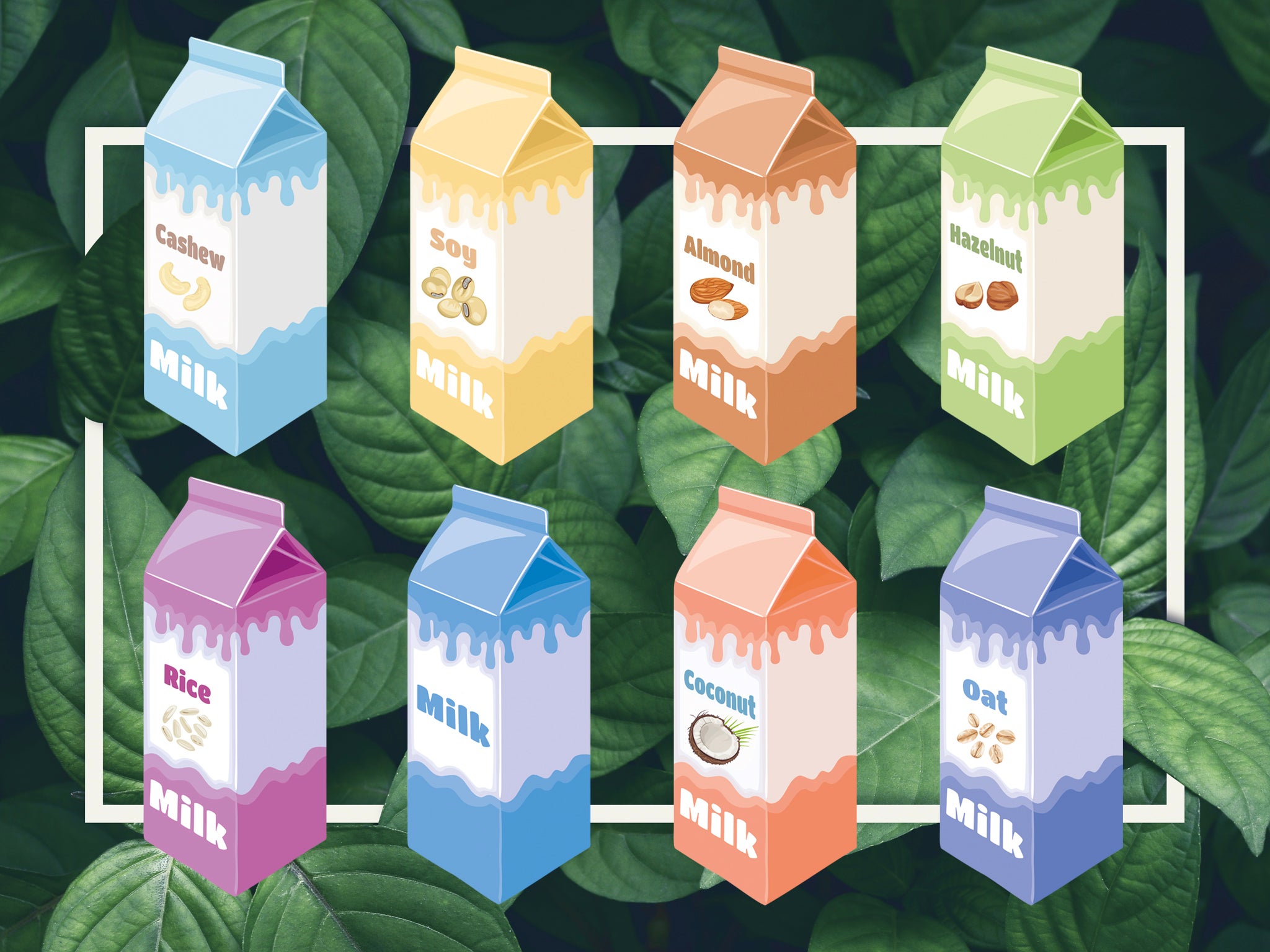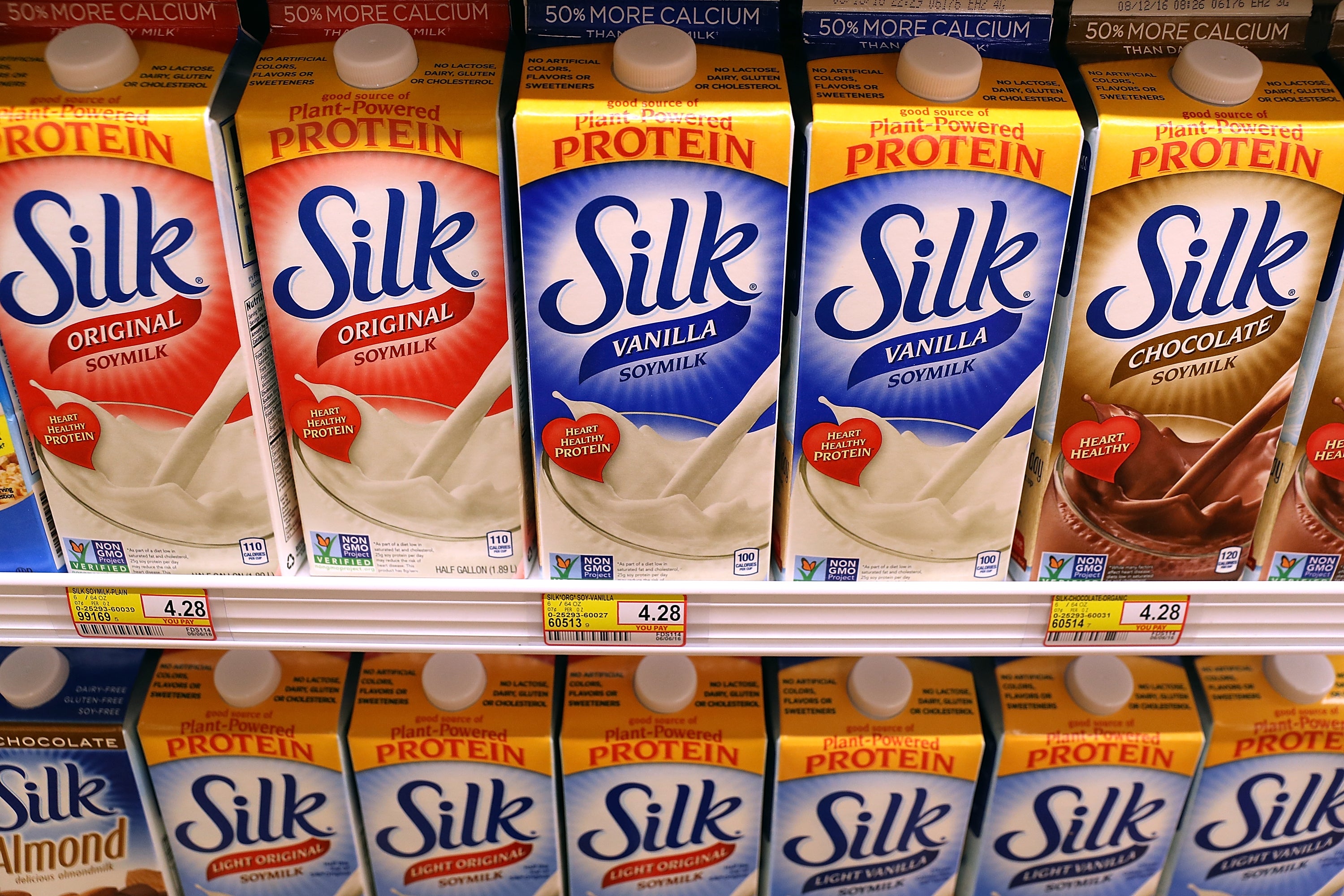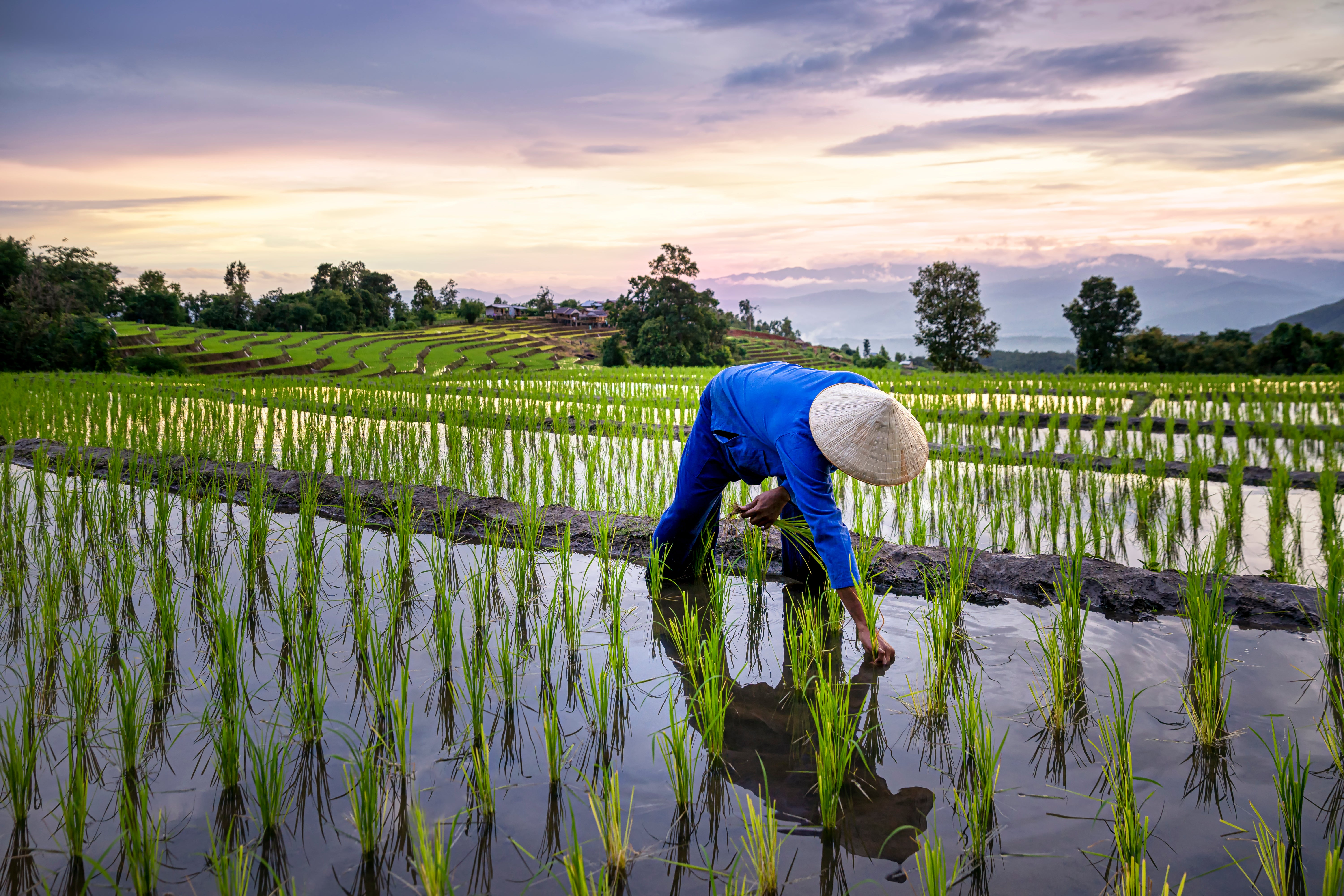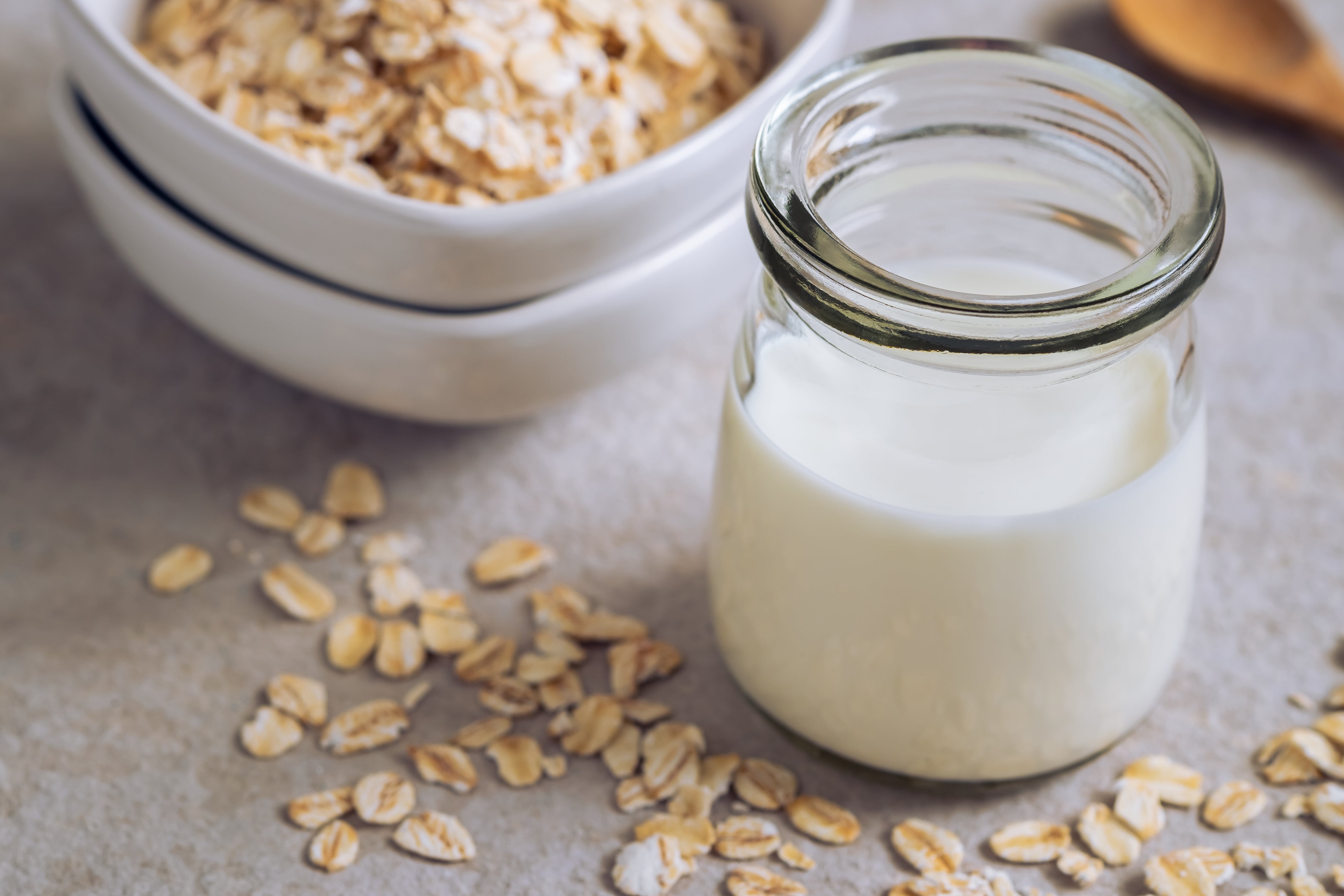Battle of the white stuff: Where to begin with plant-based milk?
Millions of Britons are turning their back on cow’s milk, but the truth about some plant-based alternatives might be just as hard to swallow, finds Emily Cope


It’s no secret that cow’s milk is increasingly out of fashion, with a rise in veganism, accessible alternative options, and serious questions over its environmental credentials.
Though a good source of calcium and protein, an extensive 2018 study by researchers at the University of Oxford showed that producing a glass of dairy milk results in almost three times more greenhouse gas emissions than any plant-based milk and requires nine times more land.
On top of this, there are ethical concerns when it comes to the treatment of some cattle during dairy farming. It is standard dairy farming practice to separate calves from their mothers within 24 hours of birth, as this allows farmers to sell the milk that the calves would otherwise drink.
However, this can be extremely distressing for both calf and mother, while the calves are sometimes shot or sold for veal or beef, according to Compassion in World Farming.
While there are British farmers who produce organic milk from free-range cows, such as The Ethical Dairy, studies show that a quarter of people in Britain have already ditched dairy for good (the Mintel sales data is from 2019, and likely to be higher in 2021). So we need to start asking, are all plant milks created equal, and do any of them generate concerns of their own?
Mark Driscoll, founder and director of Tasting the Future and a freelance food sustainability consultant, tells The Independent: “Producing a glass of dairy milk every day for a year requires 7,000 sq ft of land – the equivalent of two tennis courts – and more than 10 times as much as the same amount of oat milk, for example. All plant-based milks are better on nearly all indicators of sustainability – water and land usage, carbon dioxide emissions, wastage – than dairy milk.”
Despite being preferable to dairy, there are well-cited concerns, from the impact of excessive almond farming on the bee population, to reports about the destruction of the Amazon rainforest in our quest for soya (it should be noted that much of the soya is for animal feed), meaning the world of plant-based milk isn’t as clear cut as we may have been led to believe.
And in terms of nutrition, plant-based alternatives can be tricky to navigate, with some milks lacking protein. Others leave a cup of tea with a disappointing taste, not to mention how expensive they can be (one litre of plant-based milk can come to £3, compared with about 80p for cow’s milk) and the transportation required to import some of them into the UK.
Here we speak to the experts on which white stuff we should be drinking.
Almond milk: Bee careful

Almond milk is the UK’s most popular plant-based option, but according to Cameron Newell, who runs Bee Better Certified, almond production is causing a strain on honeybees in the USA.
The majority of almonds used to make almond milk come from across the pond – almonds are the largest specialist crop in the US – and commercial bees from around the states are drafted in every February to pollinate these almonds.
“Managed honey bees are a valuable commodity used for the pollination of many crops in the US, with almonds being the most notable due to the reliance on managed bees for pollination and the scale of the pollination event in each year,” explains Newell.
The very nature of an event where bees are trucked from all over the country is sure to put a strain on any industry...
He adds that with the continued growth of almond farming in California and other factors affecting the beekeeping industry – such as agricultural land conversion, pesticide use and the use of managed honey bees – the “sustainability of this situation is definitely in question”.
“The very nature of an event where bees are trucked from all over the country to California in the winter to pollinate over 1 million acres of one tree species is sure to put a strain on any industry, including honey bees,” says Newell.
Although Newell says there are some almond farmers worker to counteract the burden placed on bees by growing wildflower forage, or providing safe refuges for the bees in their orchards. “These practices should help greatly reduce the losses to our bee populations,” he says.
On top of this, a glass of almond milk also requires on average 74 litres (130 pints) of water to produce, which is far more than other plant-based alternatives such as oat and hemp seed milk.
Soy milk: Soy far, soy good

While soy milk is the only plant milk that comes close to offering a protein content comparable to dairy, and the Oxford study found it to the joint winner for sustainability, concerns have been raised over the impact of soya farming on the Amazon rainforest.
Research published in the journal Science found that roughly 20 per cent of soya exports to the EU may be “contaminated with illegal deforestation”. This is because the production of soy requires massive chunks of land, water and pesticides, the research claims.
However, Driscoll says these findings are misleading, because much of the soya is going to become animal feed not milk. “Most soya from South America is used as feed in the livestock industry, not turned into milk, while soya sourced for human consumption tends to be sourced from North America, Europe or Asia,” he says.
Soya beans also use less than one-tenth of the water used in the process of making almond milk, making them a good eco-friendly alternative.
If soy is your go-to milk, it’s best to do a little research to find a milk that is made from organic soybeans. According to the Ethical Consumer, brands such as Plamil, Alpro and Waitrose are all good options.
Coconut milk: Go organic

Coconut milk has long been heralded as a good environmental choice, thanks to the coconut tree having low water requirements to grow.
However, most coconuts are grown in Indonesia, the Philippines, India and other wet tropical regions, and require a great deal of transportation to reach the UK. In these places the pressure to meet demand can also cause exploitation of workers (and a detrimental effect on local wildlife).
The Fairtrade Foundation – which works for better prices, decent working conditions, local sustainability, and fair terms of trade for farmers and workers in the developing world – is concerned that coconut farmers and the needs of their communities are being overlooked.
Vindhya de Silva, supply chain and programme manager at The Fairtrade Foundation, tells The Independent: “Many of the profits made by the coconut industry do not trickle down to the farmers. Shoppers may not be aware of the many issues coconut farmers face, such as price volatility, low productivity, and issues around monoculture farming – growing only one type of a crop at one time on a specific field – and pest control.”
When buying coconut milk, de Silva asks consumers to “press big brands and retailers in particular to source Fairtrade coconut milk” and to look out for the Fairtrade labelling system.
Rice milk: A water waster

Sadly rice milk’s big water footprint means it doesn’t fare much better than that of the almond. According to the Oxford University study, just one glass of rice milk requires 34 litres of water to produce – though this is still significantly less than dairy milk, which requires 120 litres to produce one glass.
Due to the methane-producing bacteria that develop in rice paddies, rice milk is also associated with higher greenhouse gas emissions compared to other plant-based milks, according to the Oxford study.
Nutritionally, rice milk isn't all that impressive either. Thought it has low amounts of saturated fat, there is also little or no protein or the heart-protection provided by nut milks.
Oat milk: Oat-ally great

Oat milk has quickly become a favourite fridge staple. Waitrose has reported a 113 per cent in sales of the plant-based milk, while online searches for “oat milk” on the supermarket’s website are up 210 per cent.
And while Emma Clifford, associate director of restaurant guide UK Food and Drink, believes the increased interest in oat milk has been “driven by concerns around health, ethics and the environment”, oat milk is not only nutritious – with high levels of fibre and protein – but tastes great too.
This is mainly because oat milk is made by soaking steel-cut oats in water for at least 20 minutes, then blending. The final product comes from straining the resulting juice (milk) through a nut milk bag or cheesecloth.
The good news is that oat milk is particularly easy on the environment as oats are grown in cooler climates, such as northern US and Canada, and are therefore not associated with deforestation in other countries.
Not to mention the fact that brands such as Oatly and Plenish use recyclable packaging, and they withstand the tea taste test.
Hemp seed milk: Gloriously good

Hemp’s sustainability credentials are enviable. Made from the same plant used to produce marijuana, hemp grows naturally without the use of herbicides or pesticides and needs very little water.
Plus, hemp breathes in four times more carbon dioxide than trees, which improves air quality, and the tall leafy plants are a perfect bee sanctuary.
Al Overton, buying director at Planet Organic, says: “Hemp is a weed really and it grows like one, so there’s minimal input needed. This means it’s better for the environment than other plant-based milks, such as almond and rice milk.”
And Driscoll agrees, saying: “Hemp is fast-growing, thrives in a variety of soils and doesn’t require fertilisers or pesticides. It is also what I would term a ‘regenerative crop’, with their long tap roots capturing carbon dioxide from the atmosphere and returning it to the soil.”
To top it off, every single part of a hemp plant can be put to good use, from the seeds to the flowers, stalks and leaves, so there’s zero waste.
But how does it taste? Richard Smith, partner from the Tea and Coffee Company, assures us there will be no mind-altering side effects.
“Hemp milk and other products made from hemp seeds do not cause mind-altering effects like marijuana and only contain trace amounts of the psychoactive compound tetrahydrocannabinol,” he explained. “It has an earthy, nutty flavour and its creamy consistency is ideal for non-dairy lattes or as a milk substitute in tea and coffee.”
Pea protein milk: Very ap-pea-ling

Pea protein milk is another eco-friendly option.
Peas can often grow without irrigation and are easily rotated by farmers, naturally fixing nitrogen in the soil and reducing the need for artificial fertilizers.
A life cycle assessment of Ripple pea milk – funded by the company – says the product contributes just 25 per cent of the greenhouse gas emissions of dairy milk, however there’s not much information on the environmental sustainability of pea milk from independent researchers.
Swedish-based sustainable brand Sproud also produces a pea protein milk, which is made from split yellow peas, and offers a creamy taste.
Hazelnut milk: Go nuts

Hazelnut trees are cross-pollinated by wind which carries airborne dry pollen between neighbouring plants, meaning the bees are left in peace, and they help pull carbon from the atmosphere and reduce greenhouse emissions.
The trees also grow in areas with higher rainfall around the Black Sea, southern Europe and in North America, demanding much less water than almond trees, which makes hazelnut milk a good eco-friendly option.
However watch out for protein levels, as even though hazelnut milk has a similar level of calories to cow’s milk it contains much less protein, and check whether it has been fortified with vitamins.
Registered dietician Rhiannon Lambert tells The Independent: “Hazelnut milk, if fortified, it may be a source of B vitamins and Vitamin E and can contain alpha-linolenic acid (omega-3). It is also low in saturated fat and a delicious option for hot teas and chocolates.”
The Verdict: Hemp is our hero and oat a close second
According to Overton, hemp milk is the way forward – but anything is better than dairy.
“Hemp is often grown organically, and even when it doesn’t achieve organic standards it’s typically pesticide and herbicide free,” says Overton. “It really is the top choice in terms of sustainability, plus it’s very nutritious with a lower sugar content than dairy and oat milk, plus high amounts of omega-3 and omega-6.
“However, when it comes to milk any option is better for the environment than dairy.”
A close second is oat milk.
Driscoll weighs in: “From a sustainability perspective, hemp is a phenomenal product, but oat milk is also a very good choice if you’re looking to reduce your carbon footprints, especially if the oats are grown organically.”


Join our commenting forum
Join thought-provoking conversations, follow other Independent readers and see their replies
Comments